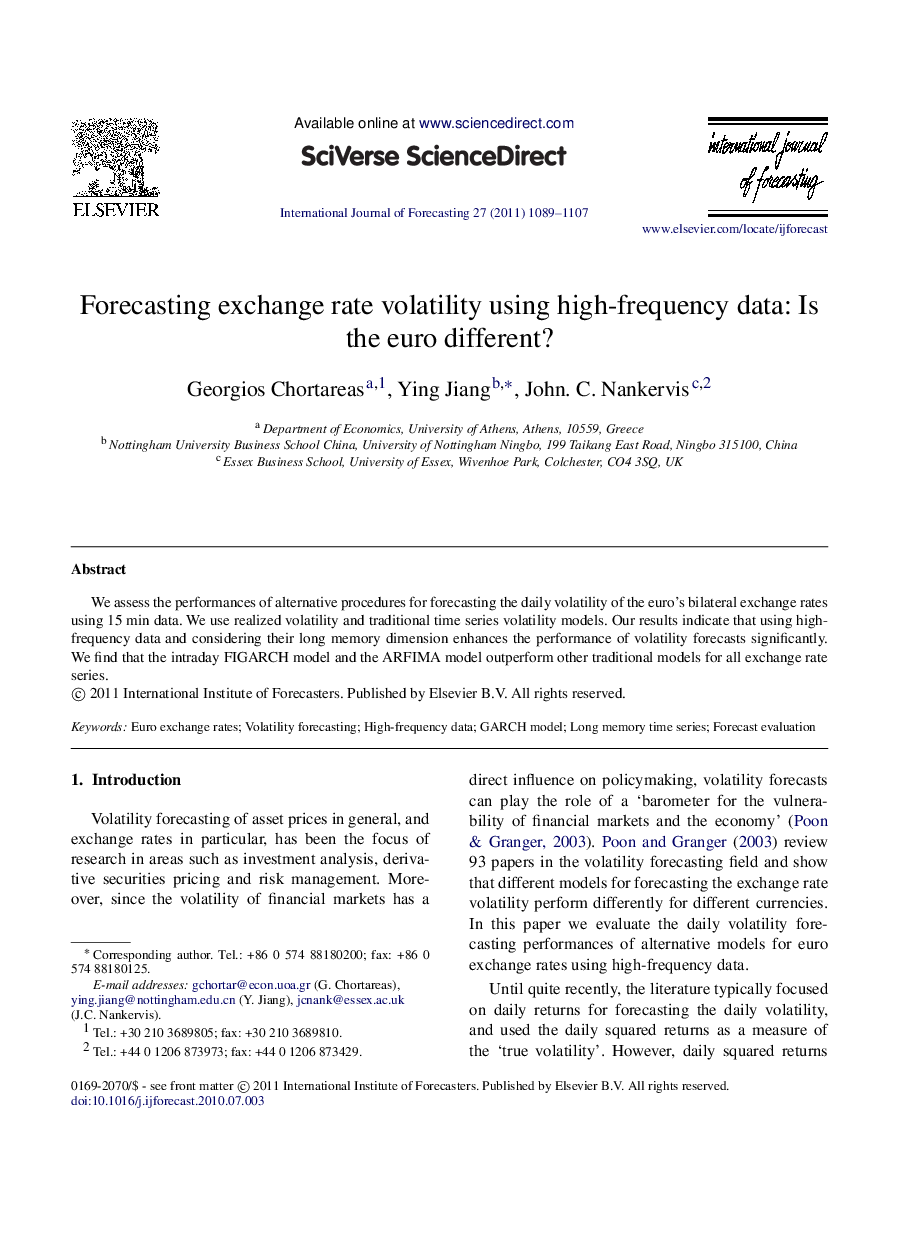| Article ID | Journal | Published Year | Pages | File Type |
|---|---|---|---|---|
| 998286 | International Journal of Forecasting | 2011 | 19 Pages |
Abstract
We assess the performances of alternative procedures for forecasting the daily volatility of the euro’s bilateral exchange rates using 15 min data. We use realized volatility and traditional time series volatility models. Our results indicate that using high-frequency data and considering their long memory dimension enhances the performance of volatility forecasts significantly. We find that the intraday FIGARCH model and the ARFIMA model outperform other traditional models for all exchange rate series.
Related Topics
Social Sciences and Humanities
Business, Management and Accounting
Business and International Management
Authors
Georgios Chortareas, Ying Jiang, John. C. Nankervis,
